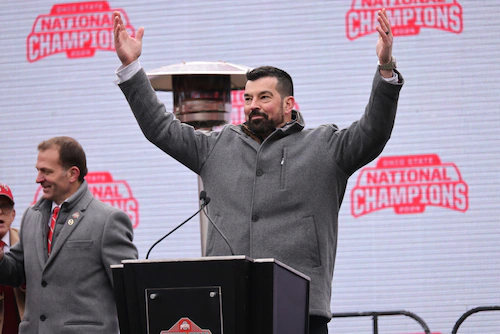A landmark antitrust settlement, approved in the *House v. NCAA* case, is poised to redefine the structure of college sports—and Ohio State is right in the center of it.
The \$2.8 billion settlement, which aims to resolve years of litigation over unpaid name, image, and likeness (NIL) compensation, represents a seismic shift in how the NCAA and its member institutions operate. Perhaps more importantly, it introduces a model where schools will be expected to directly share revenue with athletes—something that’s never been done on this scale.
For a powerhouse like Ohio State, the implications are vast.
**New Budget Priorities**
Ohio State’s athletic department has long been one of the most profitable in the country. With a broad array of sports and massive football revenue, it’s been seen as a model of success. But under the terms of the settlement, schools will be allowed—but not required—to share up to \$20 million annually in revenue with athletes, starting as early as 2025.
That means OSU will likely need to reevaluate its budget priorities. Even with its strong financial position, shifting tens of millions toward direct athlete compensation could impact funding for non-revenue sports, facilities upgrades, or staff salaries.
**Recruiting and Retention Edge**
Ohio State football, in particular, stands to benefit—if it adapts quickly. Top-tier programs that embrace the new model may gain an edge in recruiting, especially among elite athletes who now expect not only NIL deals but also structured compensation from schools. If OSU commits early and transparently to a fair revenue-sharing model, it could solidify its status as a destination for the nation’s best talent.
**Challenges for the Broader Athletic Department**
However, this shift also puts pressure on the rest of Ohio State’s 36 varsity sports. If a large portion of resources are funneled to football and men’s basketball—where the most revenue is generated—there’s concern about long-term sustainability for Olympic and non-revenue sports. The university may have to make tough decisions about which programs it can continue to fund at current levels.
**A New Era in College Athletics**
This isn’t just a one-time payout—it’s a structural change. The traditional model of amateurism is gone. Schools like Ohio State, with massive fan bases and TV deals, are uniquely positioned to thrive in this new era—but only if they evolve quickly.
For the Buckeyes, the future of competition will be about more than wins and losses. It will also depend on how well the university balances tradition, fairness, and financial strategy in this new college sports economy.
